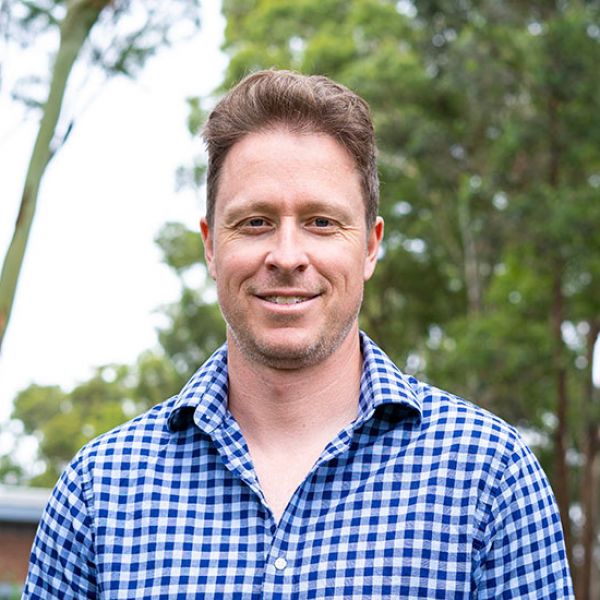Darren Southwell
Dr Darren Southwell
More than 43,500 species globally are currently on the brink of extinction, including our iconic koala. Through his critical data collection and modelling work, Dr Darren Southwell hopes to better manage those under threat to ensure their survival.

Darren Southwell is a conservation scientist dedicated to saving species and nature before it’s too late. His research is making a significant impact not only locally and nationally across Australia but also on a global scale.
“Species are disappearing faster than ever before,” Darren explains.
“The challenge is that, for most species, we have very limited information about their populations or how they are changing over time.”
Conservation biology receives relatively little funding, so a major challenge of his research is trying to determine how to monitor and manage species most cost-effectively.
“My work involves going into the bush to collect data on plants and animals, then analysing that data to determine where they occur, how they are trending over time, and what factors are driving change.”
From this point, Darren builds mathematical models to predict how these populations might respond to management. This modelling helps identify the most cost-effective management strategies for species at risk of extinction.
Always a nature lover
Darren has always loved nature and the outdoors and shares that his parents were a big influence on his career in conversation science. As a kid, they’d take him camping all around Australia during most school holidays.
Darren began his own journey in conservation with a Bachelor of Science from the Australian National University before spending five years working as a scientist at the Department of Agriculture, Fisheries and Forestry and the Australian Antarctic Division.
He then went on to complete a PhD at the University of Melbourne on the optimal management of threatened and invasive species.
After his PhD came a postdoc at the National Environmental Science Program’s Threatened Species Recovery Hub, designing and evaluating large-scale biodiversity monitoring programs across Australia.
Darren shares that working in this field has taken him to many interesting places, including Antarctica, tropical islands in the Pacific and the central deserts of Australia.
He’s worked with the federal Government (Parks Australia), every state government in Australia, and numerous environmental NGOs, including the Australian Wildlife Conservancy and Bush Heritage.
From Australia to the world
Darren is always surprised by the fact that Australia has one of the worst rates of species extinctions in the world despite being a relatively wealthy country.
“We don’t have a very good track record at investing in on-ground conservation actions. But unless we improve, many more species will continue to go extinct in the future.”
Darren is currently involved in local projects that are looking at the most efficient ways to monitor and manage threatened species, such as the koala and the green and golden bell frog.
He’s also part of a number of projects that are utilising the local knowledge and tracking skills of Indigenous rangers across the central deserts of Australia.
“In one of these projects, we are working with Parks Australia and Indigenous rangers to design a long-term biodiversity monitoring program in Uluru-Kata Tjuta National Park,” says Darren.
“Despite being so iconic, we have a limited understanding of how plants and animals are trending within the park.”
“Last year, we put out 120 camera traps and 30 sound recorders to collect baseline data on what threatened and invasive species occur in the park and where.”
He has also developed software that managers can use around the world to help design effective large-scale biodiversity monitoring programs. One of the challenges of biodiversity monitoring is knowing how much effort to put into surveys to ensure that population changes are detected when they occur.
Ensuring kids see the species we see
Darren shares that no problem is ever the same in his research, so he’s constantly challenged in this hugely important and rewarding work.
He also shares that he’s proud that his work preserves the unique biodiversity of Australia and the world—biodiversity that the next generation otherwise might not have the opportunity to enjoy.
“I hope that by conserving species and biodiversity, I give my kids and the next generation the opportunity to experience what I experienced in my life time.
The University of Newcastle acknowledges the traditional custodians of the lands within our footprint areas: Awabakal, Darkinjung, Biripai, Worimi, Wonnarua, and Eora Nations. We also pay respect to the wisdom of our Elders past and present.
